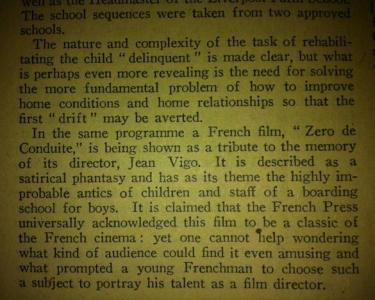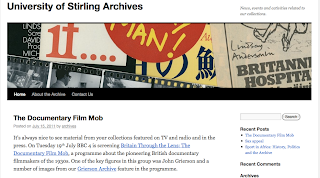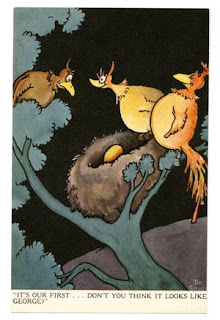On looking through the London Film Festival brochure all the films that immediately appealed to me were from, yes, you've guessed it the 'Treasures from the Archives' strand. Then, when the reality of my bank balance hit I had to whittle down what I was going to see to a select few, well a select one actually -
Wanda.
 |
| Barbara Loden, director, writer and star of Wanda. Image courtesy of BFI website |
I hadn't heard of the female director Barbara Loden before but the description in the brochure really appealed to me - a 'neo-realist gem... a rural Pennsylvanian housewife embarked on a flight to nowhere.. Wanda floats through her own life as if witness to it'. After recently rewatching Lindsay Anderson's
The White Bus with Patricia Healey's depiction of another girl passively watching her own life drift past, I was intrigued by
Wanda and am pleased to say my curiosity was well rewarded!
I obviously hadn't read the brochure properly as I didn't notice that Ross Lipman, who restored the film at UCLA, would be introducing the film. This was such a nice surprise as he gave a brilliant description of the problems facing him with the restoration of a film which was originally meant to look lo-fi and gritty. The story with
Wanda is one that I've heard so many times before sadly, a film lab was closing down and called UCLA to ask if they wanted a look before the stock all went in a skip. Lipman found the reels for
Wanda a day before they were due to be chucked and lost forever. In an
article about the film from the Guardian (17/10/201) Lipman told the story of his discovery of the reels, marked 'Wanda', "Unspooling them on my workbench I quickly realised they were the original camera rolls, and that was only the beginning. The film was shot on a beautiful, unfaded Ektachrome reversal stock: any potential restoration would perhaps look better than even the original release. One day more and the original would have gone to landfill."
I realised when Ross Lipman got up on the stage that I recognised him and when he started talking about other American neo-realist films 'Killer of Sheep' and 'The Exiles' I remembered - I'd heard him talking about the preservation of
The Exiles when I went to see it at UCLA (which I never actually got round to writing about, except
here, before I went). He explained how until relatively recently there wasn't much talk of American neo-realism as so many of these films had disappeared into obscurity - citing
The Exiles and
The Killer of Sheep as two other examples (I was lucky enough to have seen Killer of Sheep at the GFT, turns out I'm a bit of a UCLA film preservation unit groupie!). These films were pretty obscure upon release, Wanda for example was actually made, according to Lipman, as a tax write-off and although it achieved critical success this didn't translate into commercial success for Loden. It made me wonder what Lindsay Anderson would have made of them, I wonder if he ever saw any of them?It's weird that even a year after moving from Stirling and leaving the Lindsay Anderson Collection behind I still wonder what he would have made of certain films, or film makers. I guess to me, that's one of the wonderful things about being an archivist - getting all bound up with the work you're cataloguing and making connections with the people and events you're cataloguing.
On to
Wanda itself - what an incredible film! It has stuck with me for days and I imagine it will do long into the future. When I first read the description I thought of
The White Bus, I also thought of more recent female-directed and female-focused films such as
Wendy and Lucy and
Winter's Bone and in many ways there are similarities. The lack of any soundtrack - all the noises, music and silences are part of the real life of the film, there is no artificial soundtrack. I love this in films, it can be quite disconcerting at first, it makes it a lot harder to watch in a way as you can't escape into it in the same way, instead you're forced to confront the reality of the situation the characters live in. The opening scenes of
Wanda are completely silent from what I can remember, maybe a few noises of feet walking on gravel but no music, no talking, and it's all the more powerful for it.
Very early on in the film there's a scene where Wanda is walking across coal fields and the camera follows her in real time, painfully slow as she walks across this barren landscape, walking to meet someone but really going nowhere. As Wanda gets caught up in the crimes of a man she meets on the road she drifts from one situation to another, alienate, alone and hopeless. It really made me think about what it would be like to be born into that kind of poverty with no hope of any alternative, any way out, as did
Wendy and Lucy and even more so
Winter's Bone. Wanda was expected to be a housewife, raise a family and bring more children into the same cycle of poverty she grew up in - it's no wonder she wanted something different, she just didn't know what. I liked that there's no great realisation, she's not a heroine in the sense that she changes her life round and moves onwards and upwards, she just changes her life because the alternative was to grim for her to bear. I would love the chance to see this film again, and thanks to the work of Ross Lipman





















